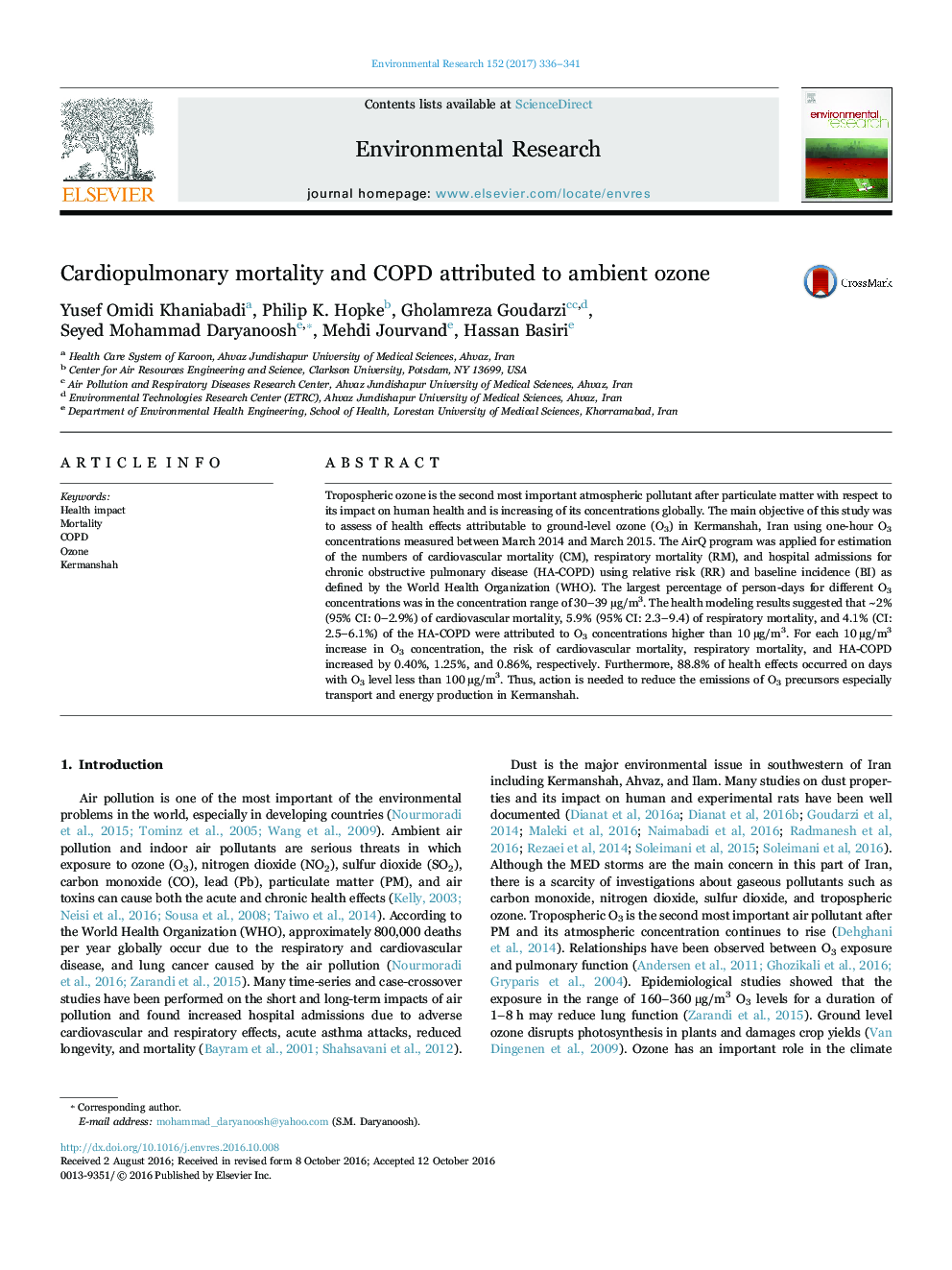| Article ID | Journal | Published Year | Pages | File Type |
|---|---|---|---|---|
| 6350831 | Environmental Research | 2017 | 6 Pages |
Abstract
Tropospheric ozone is the second most important atmospheric pollutant after particulate matter with respect to its impact on human health and is increasing of its concentrations globally. The main objective of this study was to assess of health effects attributable to ground-level ozone (O3) in Kermanshah, Iran using one-hour O3 concentrations measured between March 2014 and March 2015. The AirQ program was applied for estimation of the numbers of cardiovascular mortality (CM), respiratory mortality (RM), and hospital admissions for chronic obstructive pulmonary disease (HA-COPD) using relative risk (RR) and baseline incidence (BI) as defined by the World Health Organization (WHO). The largest percentage of person-days for different O3 concentrations was in the concentration range of 30-39 µg/m3. The health modeling results suggested that ~2% (95% CI: 0-2.9%) of cardiovascular mortality, 5.9% (95% CI: 2.3-9.4) of respiratory mortality, and 4.1% (CI: 2.5-6.1%) of the HA-COPD were attributed to O3 concentrations higher than 10 µg/m3. For each 10 µg/m3 increase in O3 concentration, the risk of cardiovascular mortality, respiratory mortality, and HA-COPD increased by 0.40%, 1.25%, and 0.86%, respectively. Furthermore, 88.8% of health effects occurred on days with O3 level less than 100 µg/m3. Thus, action is needed to reduce the emissions of O3 precursors especially transport and energy production in Kermanshah.
Related Topics
Life Sciences
Environmental Science
Health, Toxicology and Mutagenesis
Authors
Yusef Omidi Khaniabadi, Philip K. Hopke, Gholamreza Goudarzi, Seyed Mohammad Daryanoosh, Mehdi Jourvand, Hassan Basiri,
